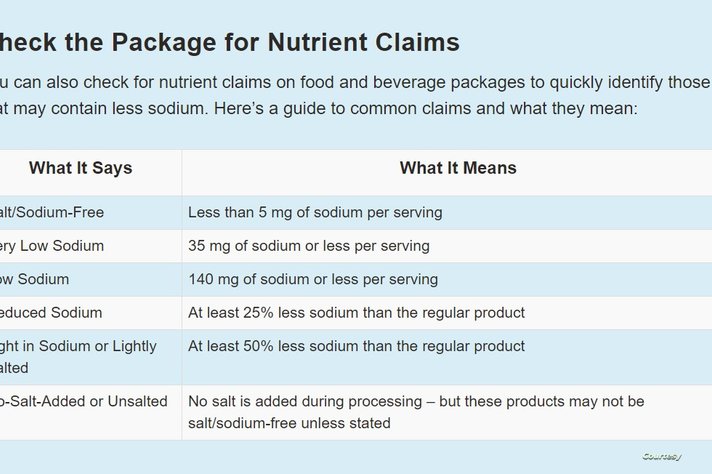The sodium that reaches our bodies from our intake of salt – mainly – has many benefits, if we do not exceed the recommended daily amounts.
Experts say that most people consume large amounts of sodium, which increases the risk of high blood pressure and heart disease.
In the United States, for example, about 95% of men and 77% of women consume more than 2,300 milligrams per day, the limit recommended by federal health officials.
But in recent decades, researchers have disagreed about how much sodium is considered dangerous to us, with some noting that federal guidelines in particular are too strict.
Dr. Lawrence Appel, professor of medicine at Johns Hopkins University School of Medicine, said in an interview with the newspaper:The New York Times“These reports about the quantities at which we should stop draw attention and leave many people confused.”
How much salt (sodium) is considered “too much”?
According According to the American Dietary GuidelinesAdults should not eat more than 2,300 milligrams – equivalent to about a teaspoon of table salt – per day.
The World Health Organization and the International Society of Hypertension have a slightly lower limit of no more than 2,000 milligrams per day.
The American Heart Association says that although no more than 2,300 milligrams per day is a good goal to achieve, it is best to avoid exceeding 1,500 milligrams per day, especially if you already have high blood pressure.
Dr. Frank, a professor of nutrition and epidemiology at Harvard University, told the same newspaper that these guidelines are based on the best available evidence regarding high blood pressure and heart disease.
But not all experts agree on these amounts. In several studies published in the past decade or so, researchers have reported that only people who consume a greater amount of sodium – in the range of 5,000 milligrams per day – have a greater risk of heart disease or death. Early.
Dr. Martin O’Donnell, professor of neurovascular medicine at the University of Galway in Ireland, said these findings suggest that sodium guidelines set by health organizations around the world were too stringent.
Other researchers have found flaws in these contradictory studies; The main problem is that it was not able to accurately measure the amount of sodium that people should not exceed.
Appel said the sodium controversy illustrates many of the challenges facing nutrition research.
He said large nutrition trials are much more difficult than large drug trials, especially when considering long-term health risks such as heart attacks and strokes.
Instead, nutrition researchers often rely on study designs that can only show associations between certain eating patterns and health, and conflicting results are common.
To put an end to this controversy, she said Food and Drug Administration The American newspaper said that adults should consume less than 2,300 mg of sodium per day, which is equivalent to about a teaspoon of table salt! For children under 14, the recommended limits are even lower.
Experts advise that we should track the details of any consumer product we buy to determine the amount of sodium it contains (see the table below).
Several recent trials showed that adults with normal blood pressure who reduced their sodium intake were less likely to develop high blood pressure than those who did not reduce their intake.
How do I know if I’m consuming the right amount?
There is no test that can measure your sodium intake other than primarily monitoring your salt intake.
In the United States, about 70 percent of the sodium people consume comes from processed foods and eating out, according to the Food and Drug Administration.
Dr. Appel said the best way to reduce sodium consumption is to eat smaller amounts of these foods and cook more of your meals at home.
ظهرت في الأصل على www.alhurra.com


